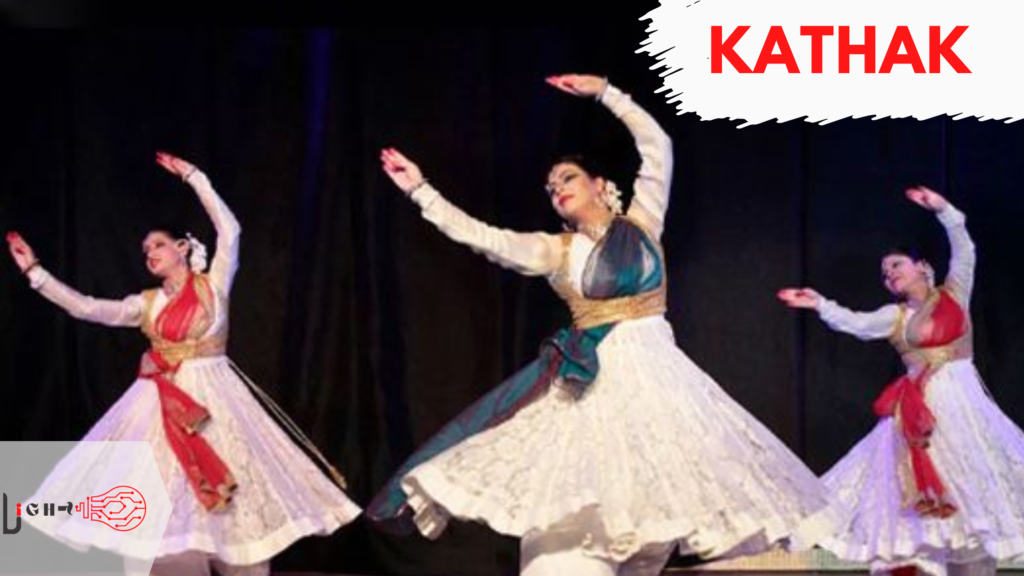Introduction to Kathak Dance
Kathak is one of the eight classical dance forms of India. It is known for its intricate footwork, graceful hand movements, and expressive storytelling. Originating from the northern regions of India, Kathak has a rich cultural heritage that dates back centuries. It is a dance form that combines rhythm, drama, and music to narrate stories, often drawn from ancient Indian epics.Kathak dancers, also known as Kathakas, use a combination of gestures, facial expressions, and movements to convey emotions and tales. The name “Kathak” is derived from the Sanskrit word “Katha,” meaning story. This storytelling aspect is what makes Kathak unique compared to other dance forms. Over the years, Kathak has evolved, incorporating influences from Persian and Mughal cultures during the medieval period. Today, Kathak continues to captivate audiences worldwide with its elegance and dynamic performances
History and Evolution of Kathak
The history of Kathak can be traced back to ancient times when storytellers, known as Kathakas, would narrate mythological tales through dance and music. Initially performed in temples, Kathak was a form of devotional expression. The dance form underwent significant transformation during the Mughal era, gaining royal patronage and incorporating Persian influences.
In the Mughal courts, Kathak evolved to include more elaborate costumes, refined techniques, and intricate footwork. The blend of Hindu and Muslim cultures during this period enriched Kathak’s repertoire. The dance form further adapted during the British colonial period, where it faced suppression but also saw a revival and reformation by dedicated artists.
Today, Kathak is performed on global stages, maintaining its traditional roots while embracing contemporary styles. Its journey from temple rituals to court performances and modern-day stages reflects the resilience and adaptability of this beautiful dance form.
Key Elements of Kathak Performance
A Kathak performance is a harmonious blend of rhythm, expression, and grace, characterized by several key elements. Intricate footwork, known as Tatkar, is a hallmark of the dance, with dancers wearing ghungroos (ankle bells) to accentuate their rhythmic movements. Hand movements, or Mudras, are employed to convey specific meanings and emotions, enhancing the storytelling aspect of the performance. Facial expressions, termed Abhinaya, are crucial, with dancers using their eyes, eyebrows, and facial muscles to depict a range of emotions and characters. Fast and precise spins, called Chakkars, require balance and control, adding dynamism to the dance. The traditional costumes and makeup further enhance the performance, with women typically wearing lehenga-choli and men donning angrakha-pyjama, while makeup highlights the facial features, especially the eyes, to aid in expressive storytelling.1
Famous Kathak Dancers
Kathak has been graced by many legendary dancers who have significantly contributed to its popularity and evolution. Among them is Birju Maharaj, a maestro of Kathak renowned for his impeccable technique and expressive storytelling, hailing from the Lucknow Gharana and playing a pivotal role in popularizing Kathak globally. Sitara Devi, often referred to as the “Queen of Kathak,” was known for her energetic and vibrant performances, blending traditional and modern elements in a unique style. Shovana Narayan, celebrated for her innovative approach, has performed worldwide and been instrumental in bringing Kathak to international platforms. Kumudini Lakhia, a pioneer in contemporary Kathak, has redefined the dance form by experimenting with new themes and choreography. These artists have not only preserved the traditional aspects of Kathak but also introduced new dimensions, ensuring its continuous evolution.

The Significance of Music in Kathak
Music plays a vital role in Kathak, setting the rhythm and mood for the performance. Traditional instruments such as the tabla (percussion), harmonium (keyboard), and sarangi (string instrument) are commonly used. The tabla provides the rhythmic base, while the harmonium and sarangi add melodic elements. Rhythm, or tala, is central to Kathak, requiring dancers to synchronize their movements with the complex rhythmic patterns played on the tabla. Mastery of rhythm is essential for executing precise footwork and spins.
Additionally, melodic frameworks, or ragas, are employed to convey different emotions, with each raga having a specific mood that the dancer interprets through movements and expressions. The synergy between music and dance in Kathak creates a powerful and emotive performance, where each element complements the other.
Why Mahi Place Should Be Your Next Travel Destination
To know more click here:https://light.vintbit.com/kerala-history/why-mahi-place-should-be-your-next-travel-destination/
Modern Interpretations of Kathak
Kathak has continually evolved, adapting to contemporary themes and styles. Many modern Kathak dancers experiment with fusion, blending Kathak with other dance forms like ballet, jazz, or contemporary dance. This fusion creates new and exciting performances that appeal to a broader audience. Contemporary Kathak often explores new themes beyond traditional mythological stories, addressing social issues, personal narratives, or abstract concepts, thus making it relevant to today’s audiences.
The rise of digital media has allowed Kathak to reach global audiences. Online classes, virtual performances, and social media have provided platforms for dancers to showcase their talent and for enthusiasts to learn Kathak from anywhere in the world. Modern interpretations of Kathak ensure that this ancient dance form remains dynamic and continues to evolve with changing times. By exploring its rich history, understanding its core elements, and appreciating the contributions of legendary dancers, one can truly appreciate the beauty and depth of Kathak dance.

